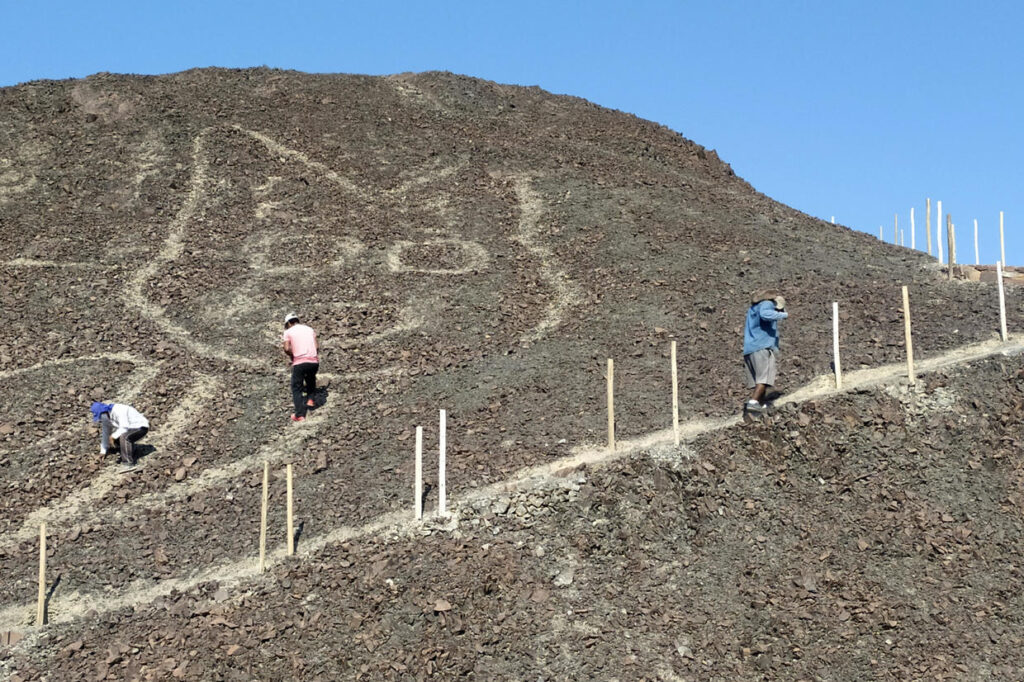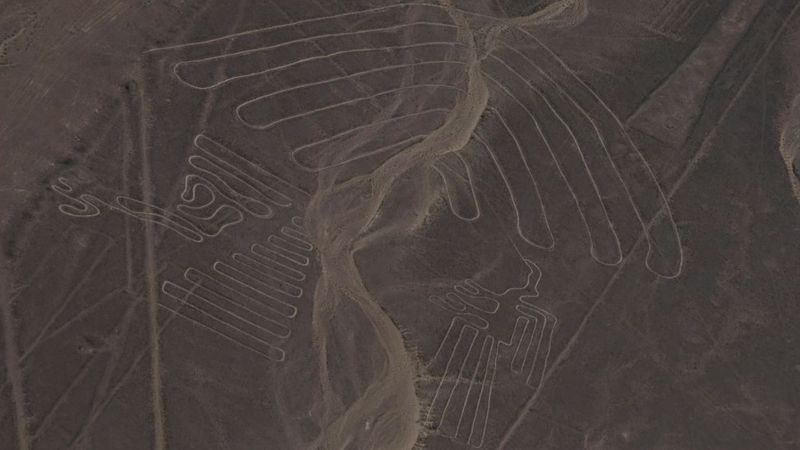Large 2,000-year-old cat discovered in Peru’s Nazca lines
Southern Peru’s dunes, carved with the geoglyphs of a hummingbird, a monkey and an orca-a figure some would dearly love to believe is an astronaut – have now revealed the form of an enormous cat lounging across a desert hillside.
During the work to increase access to one of the hills that offers a natural vantage point from which many of the designs can be seen, the Feline Nazca line was found, which dates from 200 to 100BC.
A Unesco world heritage site since 1994, the Nazca Lines, which are made up of hundreds of geometric and zoomorphic images, were created by removing rocks and earth to reveal the contrasting materials below. They lie 250 miles (400km) south of Lima and cover about 450 sq km (175 sq miles) of Peru’s arid coastal plain.

“The figure was scarcely visible and was about to disappear because it’s situated on quite a steep slope that’s prone to the effects of natural erosion,” Peru’s culture ministry said in a statement this week.
“Over the past week, the geoglyph was cleaned and conserved, and shows a feline figure in profile, with its head facing the front.” It said the cat was 37 metres long, with well-defined lines that varied in width between 30cm and 40cm.
“It’s quite striking that we’re still finding new figures, but we also know that there are more to be found,” Johny Isla, Peru’s chief archaeologist for the lines, told the Spanish news agency Efe.
“Over the past few years, the use of drones has allowed us to take images of hillsides.”
Isla said between 80 and 100 new figures had emerged over recent years in the Nazca and Palpa valleys, all of which predated the Nazca culture (AD200-700). “These are smaller in size, drawn on to hillsides, and clearly belong to an earlier tradition.”
The archaeologist said the cat had been put out during the late Paracas era, which ran from 500BC to AD200.
“We know that from comparing iconographies,” said Isla. “Paracas textiles, for example, show birds, cats and people that are easily comparable to these geoglyphs.”






